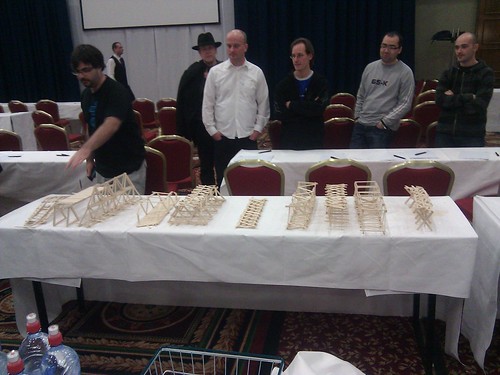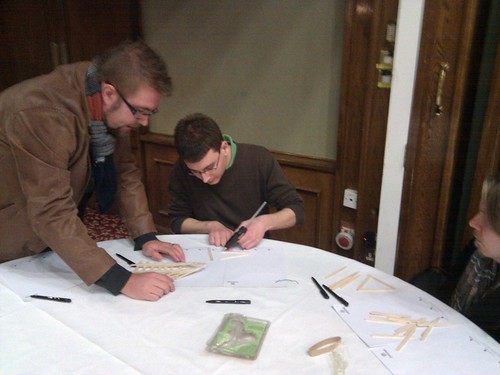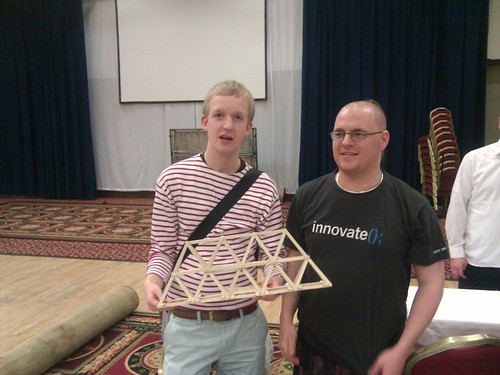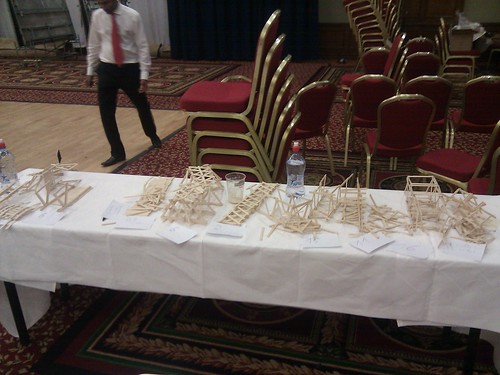November 23, 2010
General
9 Comments
Novell will be bought by a North American group called Attachmate that appears to be made up of financiers buying assets as investments. As someone who has seen one acquisition of a company by financiers up-close, and an acquisition of legacy products, where they languished as cash cows, I feel partly qualified to guess what might happen to Novell post acquisition – although I am often wrong about these things, so take all this with a pinch of salt.
The first hint is that Novell is being split into two groups – traditional Novell activities (mostly identity, security, systems & resource management) and Linux business (Suse Linux – presumably including things like Mono, the desktop group, OBS, Suse Studio and other related interesting stuff). In summary, looking at last quarter’s results (PDF link), old stuff that still generates a lot of revenue but little growth, and new & growing business, which just recently became profitable.
If you are a Dark Hand type of guy, the financier who wants a return on investment and doesn’t really care about innovation or changing the world, then your goal is to buy assets, perhaps sell a subsidiary or two to recoup some of the costs of the deal, perhaps change the management team, and keep the profitable business for a 5 year horizon before selling it on to make a profit. Your anticiated ROI for this type of deal would need to be around 8% to 10% per year.
So you sell on some patents & copyrights that you’re not really interested in (presumably with a free license to use said patents for a period of time), you split your business up into the cash cow moneymaker (Old Novell) and the new, growing business that can sell at a high valuiation relative to its earnings (Suse Linux), and you line up a buyer for the speculative Linux business. With $450M for patents and perhaps $800m for the Linux business, you get old, profitable business with limited growth potential, but with regular earnings (~$600M for the last financial year, as far as I can tell, in legacy revenues, with an operating net margin of >10%) and $300M cash on hand (after subtracting liabilities & deferred revenues from cash on hand).
Let’s do the sums, then: let’s say, for arguments sake, that Suse ends up being worth $800m (not unreasonable given annual revenues in the $300m range, with great growth prospects). This represents probably a 3x valuation of (Suse + Ximian), given that Suse was bought in 2003 for $210m – certainly not unreasonable given the growth of Suse and Linux since then, this might even be on the low side. Add in the $450m for patents, and $300m cash assets that they’re getting as part of the deal.
That means Attachmate will be getting all of Novell’s legacy business for $650m, around one year’s revenue. With an annual return of >10% per year on revenues. Presumably, there will be some cost cutting to increase that margin further, and some growth will be expected, so I’m sure that Attachmate are confident that they will find a buyer for Novell after a few years for around the same price, giving them that 50% return in around 4 or 5 years.
I’m sure that some people here more familiar with the financial markets, SEC filings and annual reports, and generally “the way things work” will point out the half-dozen flaws in my thinking here, but this is what I expect to happen – a lot of people in non-core areas will be laid off in an effort to reduce costs and “streamline” the company (ie. make it a more attractive acquisition target), Suse will be sold on, and Novell will be kept as a cash cow.
To all the friends I have working with Novell, I wish you well. Acquisitions are uncertain times, and morale sapping at the best of times. The dust will settle soon.
November 14, 2010
community, maemo
4 Comments
As part of the early bird events before the MeeGo conference this week, I ran a lollipop bridge building contest last night at the conference venue. The rules were simple: 100 lollipop sticks, a glue gun, and you have to bridge a 40cm gap, and resist as much weight as possible. We had about 40 participants, and 10 bridges entered.
There were two awards: prettiest bridge and strongest bridge. Obviously, the prettiest bridge contest was judged first.

Before...
The results were really impressive! The prettiest bridge was designed by Team Symbio, Ville Kankainen, Ilkka Maki, Henri Ranki and Márton Ekler. It was a beautiful arch bridge.

Team Symbio working on the prettiest bridge
The winning bridge, made by the team “The Unbreakables”, Casper van Donderen, Dan Leinir Turthra Jensen and Sivan Greenberg, survived the shopping basket we used as the breaking tool, with 25 1L bottles of water on top – impressive! The bridge was eventually broken when Chani tried to hang off it.

The Unbreakables - looking very smug
Some of the bridges held quite a lot of weight – and broke very spectacularly!

...and after
November 8, 2010
maemo, work
2 Comments
Some of you may be interested in a guest article I wrote for the VisionMobile blog reviewing the state of MeeGo eight months after its announcement: “The MeeGo Progress Report”
Some excerpts:
On the state of the MeeGo application developer story:
From the point of view of tools, documentation and software distribution channels, MeeGo is undoubtedly behind its primary competitors – but for such a young project, this is to be expected. The success of the project among application developers and the free software community will depend to a large extent on the project’s ability to fill these gaps and provide developers with an excellent development experience.
On the openness of the project:
[…] In the mobile platform development world, it is fair to say that MeeGo is second to none in terms of its open development model.
On comparisons with Android and iOS:
It does not feel fair at this point to compare MeeGo, a project which came into being 8 months ago, with iOS or Android, but this is the yardstick which will be used when the first MeeGo smartphone comes on the market. The project has come a long way since its inception, in particular in working towards an open and transparent development model. There is still some way to go but improvements have been happening daily.
November 6, 2010
community, gnome
2 Comments
When I was growing up in the small village of Bangor Erris in the West of Ireland, we had a bitter rivalry with people from Belmullet, the next town over. In sports, and in school, it was always “them” and “us”.
I went to boarding school in a much bigger town, Ballinasloe. It’s fair to say that not everyone in Ballinasloe knew everyone else. Our idea of “them” and “us” changed – “we” were the boarders, the townies, the bus students. There were even smaller factions – Creagh, Ahascragh, Kiltormer, …
Malcolm Gladwell mentions Dunbar’s Number, the magic figure of 150 as the maximum size of a village in the Tipping Point – the same figure is cited in David Wong’s article “the Monkeysphere”. Beyond around 150 people, groups start to segment into smaller clans, identifying differences and similarities on ever smaller scales. Towns don’t organically grow with huge rates of change, but companies, projects and industries do. And as these grow, our self-identification evolves with them. You go from being “a Google guy” to “a Google Mountain View guy” to “a Google AdWords guy” or “a Google Docs guy”.
When GNOME was young, “us” was GNOME, “them” was KDE. But GNOME has turned into a bigger town, and “us” is different now. How do GNOME developers self-identify now? By employer (Red Hat, Collabora, Novell, …), by area of participation (l10n, docs, art), by geography? And how can we recognise these sub-communities and start building bridges between them?



